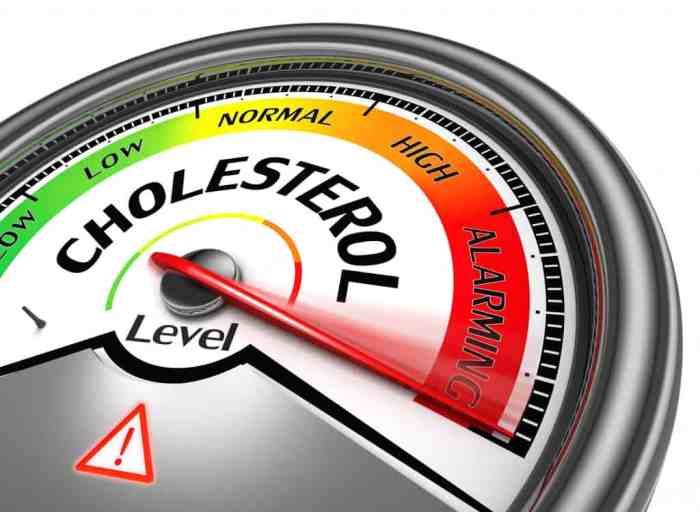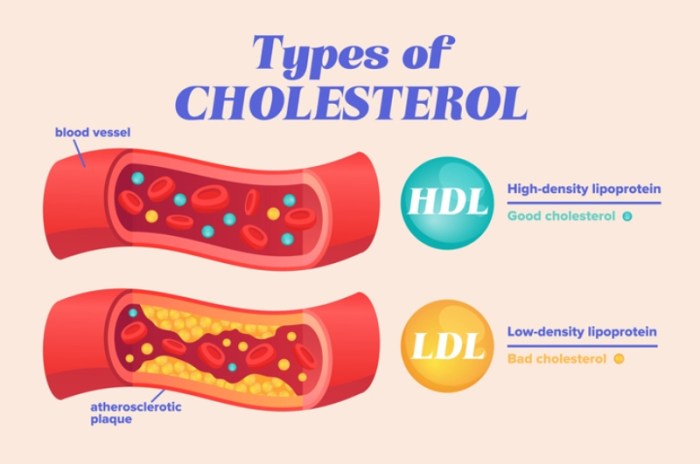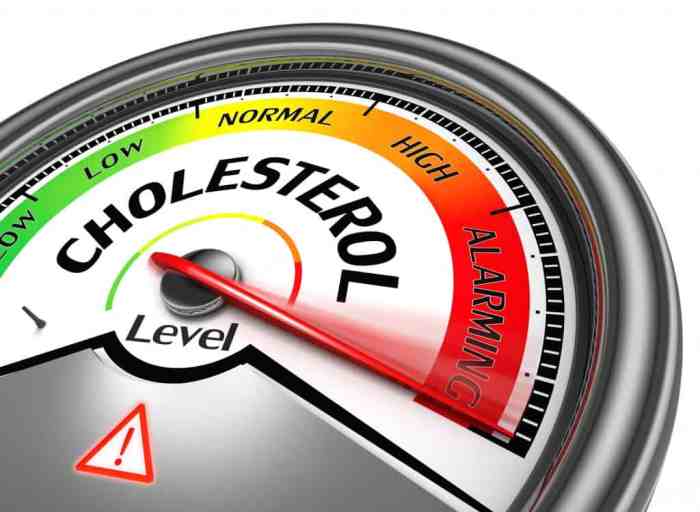Guidelines for flying with heart disease provide crucial information for safe and comfortable air travel. This comprehensive guide covers everything from pre-flight preparation to post-flight considerations, ensuring passengers with heart conditions can travel with confidence and peace of mind.
From meticulously planning your medications and dietary needs to understanding in-flight procedures and choosing the right airline, this guide empowers you to navigate the complexities of air travel with heart disease. We’ll explore essential medical documents, pre-flight checklists, in-flight strategies, and even airline policies to help you make informed decisions for a smooth and safe journey.
Pre-Flight Planning and Preparation
Traveling by air with a heart condition requires meticulous planning and preparation. This section Artikels essential steps to ensure a safe and comfortable journey. Careful attention to detail, including medical documentation, medication management, and communication with airline personnel, is crucial for minimizing potential risks.
Essential Medical Documents
Having the right documentation is paramount. These documents provide crucial information to medical professionals on board and ground personnel in case of an emergency. A comprehensive medical history, including any diagnoses, treatments, and current medications, is essential.
- Physician’s Letter: A letter from your cardiologist outlining your heart condition, current medications, and any restrictions or special needs is highly recommended. This letter should clearly state the level of risk associated with air travel and any necessary precautions.
- Prescription Medications: Bring your prescription medications in their original containers, clearly labeled, and with the prescription information visible. Be prepared to produce a copy of your prescription. This will be essential for proper medication management.
- Medical Alert Bracelet/Necklace: A medical alert bracelet or necklace helps identify your condition quickly and easily in an emergency situation.
- Relevant Medical Records: Copies of relevant medical records, such as recent echocardiograms, electrocardiograms, or stress tests, may be helpful to demonstrate your current health status.
Pre-Flight Checklist
A thorough pre-flight checklist ensures you’ve considered all aspects of your journey. This detailed checklist should be followed meticulously to minimize potential issues during your flight.
- Medication Management: Double-check your medication schedule. Ensure you have enough medication for the duration of your flight and any potential delays. Carry medications in their original containers with the prescription information. Pack a small cooler with ice packs for medications that require refrigeration. Carry a sufficient supply of your medications.
Navigating air travel with heart conditions requires careful planning, and understanding potential triggers is key. While guidelines for flying with heart disease often focus on managing symptoms and medications, it’s also important to consider other potential health concerns like anaphylaxis, and its associated risk factors. Knowing the causes of anaphylaxis, like food allergies or certain medications, can help you tailor your travel preparations for a safer flight experience.
So, whether you’re concerned about your heart or potential allergic reactions, thorough preparation is crucial for a smooth and safe journey. Refer to this resource for a deeper understanding of anaphylaxis causes and risk factors: anaphylaxis causes risk factors. Ultimately, these precautions will help you travel with confidence and peace of mind.
- Dietary Considerations: If your heart condition necessitates specific dietary restrictions, inform the airline about any dietary needs. Pack any required foods or supplements to maintain a healthy diet during the flight.
- Physical Activity: Plan light physical activity to maintain good circulation during the flight. Consider getting up and moving around the cabin periodically. Consult with your doctor about appropriate levels of physical activity during air travel.
- Hydration: Drink plenty of water to maintain adequate hydration. Dehydration can exacerbate some heart conditions. Avoid excessive caffeine and alcohol consumption.
Informing the Airline and Cabin Crew
Transparency about your condition with airline personnel is vital. This proactive measure can ensure a smoother journey and appropriate assistance in case of an emergency.
- Contacting the Airline: Contact the airline directly before your flight to inform them of your heart condition. This allows them to prepare for potential contingencies.
- Communicating with Cabin Crew: Inform the cabin crew about your condition during the pre-flight briefing. This enables them to recognize your needs and provide appropriate assistance.
Pre-Flight Consultations
Consultations with healthcare providers are critical for evaluating your suitability for air travel. They can provide tailored recommendations for a safe and comfortable journey.
- Cardiologist Consultation: A visit to your cardiologist is essential before any flight. They can assess your current health status and provide specific advice about air travel.
- Potential Scenarios: Pre-flight consultations might include discussions about medication adjustments, dietary restrictions, or physical activity limitations during the flight.
Emergency Contacts and Procedures
Having a plan for emergencies is crucial. This proactive approach ensures that appropriate action is taken quickly in case of an event.
- Emergency Contacts: Prepare a list of emergency contacts, including your physician, family members, or friends.
- Emergency Procedures: Understand the emergency procedures and protocols on the airline and be prepared to follow instructions during an incident. Know where the nearest emergency exits are on the aircraft.
In-Flight Considerations
Maintaining cardiovascular health during air travel requires careful attention to in-flight factors. Altitude changes, cabin pressure, and the stress of air travel can all impact heart rate and blood pressure, potentially exacerbating pre-existing conditions. Understanding how to manage these factors is crucial for a safe and comfortable flight experience.
Maintaining Stable Heart Rate and Blood Pressure
Maintaining a stable heart rate and blood pressure during flight is paramount. The reduced air pressure in the cabin can lead to a slight increase in heart rate in some individuals. This effect is often temporary and usually doesn’t pose a problem for healthy individuals. However, for those with heart conditions, it’s essential to be aware of potential changes and take proactive steps to manage them.
Monitoring your own vital signs, if possible, is important. If you experience a significant change in your heart rate or blood pressure, inform the cabin crew immediately.
Stress Management Strategies
Stress and anxiety can significantly impact cardiovascular health. Air travel, with its inherent pressures and uncertainties, can trigger these responses. Implementing stress management techniques can help mitigate these effects. Deep breathing exercises, guided imagery, and meditation can help calm the mind and body. Packing calming music or audiobooks can also provide a sense of control and relaxation during the flight.
Prioritizing sufficient rest before the flight can reduce the likelihood of feeling overwhelmed during the journey.
Seating Arrangements and Suitability
The seating arrangement on an airplane can affect comfort and potentially impact heart health. For those with heart conditions, aisle seating might offer a slight advantage, providing easier access to restroom facilities and allowing for easier movement. However, this is not always necessary or practical. The most crucial aspect is comfort and avoidance of any posture that might restrict blood flow.
If you have concerns about specific seating arrangements, discussing your needs with the airline staff or flight crew can help to identify the best option for you.
Potential Symptoms and Seeking Assistance
Recognizing potential symptoms during a flight is critical for ensuring timely intervention. Symptoms such as chest pain, shortness of breath, dizziness, or excessive fatigue should not be ignored. These symptoms could indicate a developing cardiac event. If you experience any of these, inform the flight attendants immediately. Early intervention is key in managing potential issues.
It’s important to note that these symptoms can also be associated with other conditions, so proper medical evaluation is crucial.
Emergency Procedures
Understanding emergency procedures is vital for ensuring your safety and well-being during a flight. Knowing the location of emergency exits, oxygen tanks, and the nearest medical staff is crucial. Familiarizing yourself with these details beforehand can significantly reduce anxiety and improve your response time in a crisis.
| Emergency Procedure | Description |
|---|---|
| Emergency Exits | Locate the closest emergency exits and understand their operation. |
| Oxygen Tanks | Identify the location of oxygen tanks and understand their use. |
| Cabin Crew | Be familiar with the procedures for contacting cabin crew in case of an emergency. |
Choosing the Right Airline
Flying with a heart condition requires careful consideration, and choosing the right airline is a crucial step. Selecting an airline that understands and accommodates special needs is paramount to a smooth and safe journey. Knowing the airline’s policies and procedures for passengers with heart conditions can ease anxieties and ensure proper care during the flight.Careful selection of the airline is essential, especially for individuals with heart conditions.
Factors like the airline’s experience in handling medical emergencies, their communication channels, and their commitment to passenger safety significantly influence the travel experience. Understanding the airline’s specific policies regarding heart conditions can help passengers make informed decisions.
Airlines Known for Experience and Accommodations
Many airlines have established reputations for handling passengers with special needs. These airlines typically have dedicated staff trained to deal with medical emergencies and are equipped to handle potential issues. Researching and selecting an airline with a proven track record in accommodating passengers with heart conditions is a proactive approach to ensure a positive travel experience.
Factors to Consider When Selecting an Airline
Several factors influence the choice of airline for travelers with heart conditions. These include the airline’s reputation for handling medical emergencies, its communication protocols, and its commitment to passenger safety. The availability of medical personnel on board, along with the airline’s response time to medical situations, are critical considerations.
Communication with the Airline Regarding Specific Needs
Open communication with the airline about specific needs is vital. Passengers should clearly communicate their medical condition and any potential concerns to the airline. This proactive approach can help the airline understand the situation and prepare for potential contingencies. Providing relevant medical documentation and communicating the specific needs of the passenger ensures the airline is well-informed about any potential medical issues.
Airline Policies on Accommodating Passengers with Heart Disease
Understanding the specific policies of different airlines is crucial for passengers with heart conditions. This information allows passengers to make informed choices. A comprehensive understanding of the airline’s response protocol to medical emergencies and their procedures for handling special needs can significantly impact the passenger’s experience.
| Airline | Policy on Heart Conditions | Emergency Response Time | Medical Personnel Availability |
|---|---|---|---|
| Airline A | Offers pre-flight questionnaires and in-flight medical assistance | Within 5 minutes | One doctor on board |
| Airline B | Requires pre-flight medical certification and assigns a designated seat | Within 10 minutes | One nurse on board |
| Airline C | Provides in-flight medical kit and trained staff | Within 15 minutes | Paramedic on standby |
Dietary and Nutritional Guidelines
Proper nutrition plays a crucial role in maintaining cardiovascular health, particularly during air travel. Maintaining a balanced diet, managing fluid intake, and making smart food choices can help minimize potential risks and ensure a comfortable journey for individuals with heart conditions. This section provides practical guidelines to help you navigate the dietary aspects of air travel safely and effectively.A well-planned diet before, during, and after air travel can significantly impact cardiovascular health.
Prioritizing nutrient-rich foods and staying hydrated is essential for preventing complications. By following these guidelines, passengers with heart conditions can proactively manage potential risks associated with air travel.
Importance of a Balanced Diet Before Air Travel
A balanced diet rich in fruits, vegetables, lean proteins, and whole grains provides the essential nutrients needed to support cardiovascular health. Avoiding processed foods, excessive saturated and unhealthy fats, and sugary drinks is vital. A healthy pre-flight diet reduces the risk of blood pressure fluctuations and other potential cardiovascular complications during the flight. For example, a meal high in fiber and complex carbohydrates can help maintain stable blood sugar levels, which is important for individuals with heart conditions.
Managing Fluid Intake and Dehydration
Dehydration is a significant concern during air travel, potentially leading to blood pressure changes and cardiovascular strain. It’s crucial to maintain adequate hydration before, during, and after the flight. Drink plenty of water throughout the day leading up to the flight, and continue to sip water regularly during the journey. Avoid sugary drinks, as they can lead to fluctuations in blood sugar levels.
Carry a reusable water bottle to remind yourself to stay hydrated.
Healthy Snacks and Meals Suitable for Air Travel, Guidelines for flying with heart disease
Choosing healthy snacks and meals is essential for managing blood sugar levels and preventing potential discomfort during the flight. Fruits like apples, bananas, and oranges, along with vegetables like carrots and celery, make excellent low-calorie and nutritious options. Lean protein sources like nuts, seeds, and hard-boiled eggs are also good choices. Pre-portioned snacks in reusable containers can help manage portion sizes.
Avoid highly processed snacks and meals with excessive salt or sugar.
Role of Hydration in Maintaining Cardiovascular Health During Air Travel
Adequate hydration is critical for maintaining blood volume and blood pressure, particularly during the reduced pressure environment of air travel. Proper hydration can prevent blood thickening, which can contribute to cardiovascular stress. Remember to drink water frequently, even if you don’t feel thirsty. Carrying a water bottle is a great reminder to hydrate throughout the flight.
Navigating air travel with heart conditions requires careful planning. Understanding the guidelines for flying with heart disease is crucial for a smooth trip. Interestingly, some of the latest research in obesity treatment, like whats new in obesity treatment , might even offer indirect benefits for heart health, potentially impacting future flight planning strategies for those with heart conditions.
Ultimately, thorough preparation and consultation with your doctor remain key for a safe and enjoyable flight.
Dietary Restrictions and Special Meal Requests for Passengers with Heart Conditions
Passengers with heart conditions may have specific dietary restrictions or requirements. It’s essential to communicate these needs to the airline well in advance of the flight. Some individuals may need to limit sodium intake, or avoid specific types of fats. By pre-arranging special meal requests, passengers can ensure they have appropriate and healthy food options on the flight.
Airlines often have options for low-sodium or low-fat meals, and many offer customized options if requested. For example, if you have a severe heart condition and require a specific diet, informing the airline will enable them to provide the appropriate meal, and avoid complications.
Physical Activity and Exercise
Staying active is crucial for overall well-being, especially when traveling. Air travel, with its prolonged periods of sitting, can put extra strain on the cardiovascular system. Maintaining a healthy level of physical activity before, during, and after your flight can significantly mitigate these risks. This section offers practical advice and simple exercises to keep you moving and comfortable throughout your journey.
Maintaining Activity Before Travel
Regular exercise before your flight helps prepare your body for the demands of air travel. Aim for at least 30 minutes of moderate-intensity exercise most days of the week. This could include brisk walking, swimming, cycling, or any activity that elevates your heart rate. Prioritize activities you enjoy to ensure long-term adherence.
In-Flight Movement and Stretching
Prolonged sitting during flights can lead to stiffness and discomfort. Regular stretching and movement are essential for preventing blood clots and promoting circulation. Don’t underestimate the power of simple movements to maintain comfort and well-being.
Simple In-Flight Exercise Routines
To combat the effects of prolonged sitting, incorporate these simple exercises throughout your flight. Remember to listen to your body and adjust the intensity based on your individual needs. Gentle movements are preferable to strenuous activity during the flight.
Table of Simple Stretches
| Stretch | Instructions |
|---|---|
| Lower Body Stretch: Hamstring Stretch | Extend one leg straight out in front of you. Gently bend forward from your hips, keeping your back straight. Hold for 15-30 seconds. Repeat with the other leg. |
| Lower Body Stretch: Calf Stretch | Place your hands on a wall or chair for support. Step one leg back, keeping your heel on the ground and your front knee slightly bent. Feel the stretch in your calf. Hold for 15-30 seconds. Repeat with the other leg. |
| Upper Body Stretch: Shoulder Stretch | Bring one arm across your chest, using the other hand to gently pull it closer to your body. Hold for 15-30 seconds. Repeat with the other arm. |
| Upper Body Stretch: Neck Stretch | Gently tilt your head to one side, using your hand to gently support your head. Hold for 15-30 seconds. Repeat on the other side. |
| Upper Body Stretch: Arm Stretch | Extend one arm straight out in front of you. Use your other hand to gently push down on your extended arm, feeling the stretch in your shoulder and upper arm. Hold for 15-30 seconds. Repeat with the other arm. |
Medication Management
Traveling with heart disease requires meticulous planning, and medication management is a crucial aspect. Ensuring a consistent supply of your prescribed medications is vital for maintaining your health and well-being during the flight. This section will delve into the specifics of managing your medications throughout the journey, from pre-flight preparation to in-flight considerations.Proper medication management during air travel is essential to avoid any disruptions in your treatment plan.
Understanding the specific needs of your medications and taking proactive steps to manage them can help maintain your heart health throughout the journey. This includes considerations for air pressure changes, potential interactions with travel, and storing medications safely.
Navigating air travel with heart disease requires careful planning. Following specific guidelines is crucial for a smooth and safe journey. For example, a healthy diet, like incorporating a high protein fat breakfast, might be beneficial for managing certain health conditions, and studies suggest that a high protein fat breakfast can reduce a1c. high protein fat breakfast can reduce a1c This, in turn, can help ensure your overall well-being and reduce potential risks during the flight.
So, remember to always check with your doctor for personalized advice before flying.
Carrying a Sufficient Supply
Maintaining a consistent medication regimen is critical for managing heart conditions. Having enough medication for the entire duration of your trip, plus a few extra days as a buffer, is highly recommended. This proactive approach ensures you won’t run out of medication unexpectedly. This includes not only the prescribed dosage but also the dosage form.
Managing Medications During the Flight
Air pressure changes can affect medications, particularly those in liquid form. To mitigate this, keep medications in their original containers and avoid opening them frequently. Carry your medications in a secure, easily accessible bag or pocket. Do not place medications in checked baggage.
Storing Medications and Potential Interactions
Medications should be stored in a cool, dry place away from direct sunlight. Ensure your medications are properly labeled and organized in a clear, easily accessible container. Consult your doctor or pharmacist about any potential interactions between your medications and air travel.
Medication Management Checklist
This checklist can help you stay organized and prepared:
- Confirm with your doctor the necessary dosage and amount of medications for your trip.
- Pack medications in their original containers and clearly label them.
- Place medications in a carry-on bag or a personal item, not in checked baggage.
- Keep medications in a cool, dry place away from direct sunlight.
- Confirm with the airline regarding any special instructions or requirements for carrying medications.
- Keep medications within easy reach during the flight.
- If possible, bring a copy of your prescription and/or medical history with you.
- Have a backup plan in case of loss or damage of medications.
- Consult your doctor about potential interactions between medications and air travel.
- Adhere to your usual medication schedule, even during the flight, unless your doctor advises otherwise.
Emergency Preparedness

Flying with heart conditions requires careful planning and awareness of potential emergencies. Knowing how to react in critical situations can significantly impact the outcome. This section details crucial steps for ensuring your safety and well-being during a flight.Recognizing and responding promptly to potential medical issues is paramount. Preparation is key, and understanding the procedures for activating emergency protocols, as well as knowing your emergency contacts, can help maintain composure during a stressful situation.
Knowing the procedures for different airlines can also be invaluable.
Recognizing Potential Emergency Situations
Understanding the signs of a heart attack or stroke is critical. Early recognition allows for prompt medical intervention, potentially saving lives. Timely action is essential.
- Heart Attack: Common symptoms include chest pain or discomfort, shortness of breath, pain spreading to the arm, neck, jaw, or back. Sweating, nausea, and lightheadedness are also potential indicators. Immediate medical attention is crucial.
- Stroke: Symptoms include sudden numbness or weakness of the face, arm, or leg, especially on one side of the body; sudden confusion, trouble speaking or understanding; sudden trouble seeing in one or both eyes; sudden trouble walking, dizziness, loss of balance, or coordination; sudden severe headache with no known cause. Prompt medical intervention is vital.
Emergency Protocols on the Aircraft
Airlines have specific procedures for handling medical emergencies. Familiarizing yourself with these protocols can provide crucial guidance in an emergency.
- Crew Notification: If you experience symptoms of a heart attack or stroke, immediately alert the flight crew. Describe your symptoms clearly and concisely.
- Cabin Crew Assistance: Cabin crew members are trained to handle medical emergencies. They will guide you through the steps required to activate the emergency response system.
Emergency Contacts and Airline Procedures
Different airlines have varying emergency procedures. Knowing the specific protocols of the airline you are flying with is vital.
- Airline Specific Information: Check the airline’s website or contact them directly for detailed information about their emergency procedures, including contact numbers and emergency response protocols.
- Emergency Contact Information: Ensure that your emergency contacts have your itinerary and flight details. Inform them of any potential health concerns.
Activating the Emergency Response System
A step-by-step guide for activating the emergency response system can significantly improve the effectiveness of emergency response.
- Assess the Situation: Determine if you or someone else requires immediate medical attention. Identify the symptoms and severity of the situation.
- Alert the Flight Crew: Clearly and concisely inform the flight attendants of the situation and your symptoms. Describe any specific needs or medical conditions.
- Follow Crew Instructions: Cabin crew members are trained to handle medical emergencies. Follow their instructions carefully, and provide any necessary information to aid their efforts.
- Remain Calm: Maintaining composure is crucial during an emergency. Staying calm will assist in the situation.
Common Signs of Heart Attack and Stroke
Recognizing the signs of a heart attack or stroke can save lives. Immediate medical attention is crucial.
| Condition | Common Signs |
|---|---|
| Heart Attack | Chest pain/discomfort, shortness of breath, pain spreading to arm/neck/jaw/back, sweating, nausea, lightheadedness |
| Stroke | Sudden numbness/weakness of face, arm, or leg (especially on one side); sudden confusion, trouble speaking or understanding; sudden trouble seeing in one or both eyes; sudden trouble walking, dizziness, loss of balance, or coordination; sudden severe headache with no known cause |
Immediate medical attention is crucial for both heart attacks and strokes. Early intervention can significantly improve outcomes.
Post-Flight Considerations: Guidelines For Flying With Heart Disease

Taking a flight with heart disease requires careful attention to both the pre- and post-flight periods. While meticulous planning before your journey is crucial, recognizing and addressing potential post-flight complications is equally important. Post-flight monitoring is essential to ensure a smooth recovery and prevent any unforeseen issues.Post-flight recovery is a critical phase, requiring vigilance and proactive management to prevent any unforeseen heart-related complications.
It’s not just about feeling well; it’s about actively monitoring your body’s response to the travel stress. This proactive approach will help in ensuring a swift return to normalcy and preventing potential health issues.
Monitoring for Post-Flight Complications
Post-flight monitoring involves careful observation for any signs of discomfort or changes in your heart health. This includes symptoms like chest pain, shortness of breath, palpitations, or unusual fatigue. Any such changes warrant immediate medical attention. Understanding your body’s signals and knowing what to look for can be vital in preventing potential problems.
Following Up with a Healthcare Provider
Scheduling a follow-up appointment with your healthcare provider after air travel is crucial. This appointment allows for a comprehensive assessment of your well-being, including any potential complications. Your doctor can evaluate your condition and adjust your treatment plan as needed. This proactive approach allows for personalized care and ensures that any potential issues are addressed promptly.
Managing Lingering Symptoms
If you experience lingering symptoms after air travel, it’s important to discuss them with your healthcare provider. These symptoms might include fatigue, discomfort, or any other unusual feelings. Proper diagnosis and management of these symptoms are crucial for a smooth recovery. Your doctor can provide tailored advice and recommendations based on your specific condition.
Maintaining a Healthy Lifestyle After Air Travel
Maintaining a healthy lifestyle post-travel is key to long-term well-being. This includes a balanced diet, regular exercise, and adequate rest. A healthy lifestyle supports your heart’s recovery and overall health. This commitment to a healthy lifestyle will help you avoid future problems and maintain optimal health.
Potential Follow-up Care Procedures
Potential follow-up care procedures for passengers with heart conditions after air travel may include medication adjustments, stress management techniques, or further diagnostic testing. The specific procedures will depend on your individual circumstances and the advice of your healthcare provider. Your doctor can provide personalized recommendations for your specific needs.
Ultimate Conclusion
In conclusion, flying with heart disease can be managed safely and effectively with proper planning and preparation. This guide provides a roadmap for ensuring a smooth and secure flight experience. By understanding pre-flight procedures, in-flight considerations, and post-flight care, you can minimize risks and maximize comfort during your travels. Remember to always consult with your healthcare provider before any air travel.







